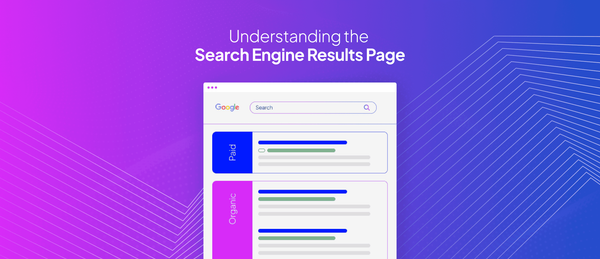When it comes to web development and SEO optimization, HTTP status codes play a crucial role in determining how search engines and users interact with your website. These status codes, represented in three-digit numbers, offer valuable information about the response from the server. In this comprehensive guide, we will explore the most common HTTP status codes and their significance for SEO, as well as how to configure and resolve them.
What are HTTP Status Codes?
HTTP status codes are critical indicators of a web server’s response to a request, helping browsers and search engines understand how to handle the content. They are categorized into five main groups: Informational (1xx), Success (2xx), Redirection (3xx), Client Errors (4xx), and Server Errors (5xx).
HTTP Status Codes Overview
1xx Informational
100 Continue: The server acknowledges the request but needs more information.
- This status code indicates that the server has received the initial part of the request and awaits further details before proceeding. It is rarely used in SEO but signifies that the request is still in progress.
101 Switching Protocols: The server is switching to a different protocol.
- This code signifies a change in the communication protocol and is primarily used during the early stages of negotiation between the client and server.
2xx Success
200 OK: The request was successful.
- This code indicates a successful request, where the server has fulfilled the request as expected. It is one of the most common status codes for SEO optimization.
201 Created: A new resource has been successfully created.
- This code is used when a new resource has been created as a result of the request. It’s often employed in RESTful APIs and content management systems.
204 No Content: The request was successful, but no response body is needed.
- This code indicates that the request was successful, but the server does not need to send a response body. It’s often used in situations where the client only needs confirmation of success.
3xx Redirection
300 Multiple Choices: Multiple options for the resource.
- This code indicates that the request has multiple options available, and the user or client should choose from them. It is not commonly used in SEO but can be relevant in specific situations.
301 Moved Permanently: Used for permanent URL redirection.
- A 301 redirect is used when a page or resource has permanently moved to a new URL. It informs search engines that the old URL is no longer valid and should transfer its SEO equity to the new URL.
302 Found (or 302 Temporary Redirect): Used for temporary URL redirection.
- A 302 redirect is used when a page has temporarily moved to a different URL. Unlike a 301 redirect, it does not transfer SEO equity and is suitable for short-term changes.
303 See Other: The response can be found at a different URL.
- This status code indicates that the requested resource is available at a different URL, and the client should make a GET request to the new URL.
307 Temporary Redirect: Similar to 302 but maintains the method (POST or GET).
- Similar to a 302 redirect, the 307 status code indicates a temporary redirection. However, it maintains the original request method, which can be crucial in certain scenarios.
4xx Client Errors
400 Bad Request: The request is invalid.
- A 400 error signifies that the request is invalid or incomplete. It can occur due to various reasons, such as missing parameters or incorrect data.
401 Unauthorized: Authentication is required.
- A 401 error indicates that the client must provide valid authentication credentials to access the requested resource.
403 Forbidden: The server refuses to fulfill the request.
- This status code is returned when the server understands the request but refuses to fulfill it. It can occur when the user lacks necessary permissions to access the resource.
404 Not Found: The requested resource does not exist.
- A 404 error indicates that the requested resource is not available on the server. Handling 404 errors effectively is essential for SEO to avoid negative user experiences and preserve SEO equity.
5xx Server Errors
500 Internal Server Error: A generic error message for server issues.
- A 500 error indicates a generic server error. It often occurs when the server encounters an unexpected issue while processing the request.
502 Bad Gateway: The server received an invalid response from the upstream server.
- A 502 error typically occurs in a reverse proxy setup when the upstream server sends an invalid response. It suggests issues in server communication.
Using HTTP Status Codes for SEO
In SEO, all status codes have relevance. The way you configure and handle them can significantly impact the user experience and search engine rankings.
Configuring and Generating Status Codes
Configuring status codes depends on your web server and programming language. For example, in Apache, you can use the Redirect directive in the .htaccess file for 301 and 302 redirects. In Python, you can use libraries like Flask to control status codes in web applications.
Impact on SEO
Properly configured status codes can enhance SEO and user experience, while misconfigured or neglected codes can harm rankings.
- 301 redirects pass link equity, making them preferable for permanent URL changes.
- 302 and 307 redirects do not pass link equity, making them suitable for temporary changes.
- 404 errors should be handled with custom error pages or redirected to relevant content.
Solutions and Best Practices
- Regularly monitor your website for all types of errors and address them promptly.
- Use relevant status codes to provide users and search engines with accurate information.
- Employ 410 Gone for content that should never return, signaling its removal from the index.
Conclusion
HTTP status codes are a fundamental aspect of web development and SEO. Understanding when and how to use them is essential for creating a positive user experience and maintaining search engine rankings. By using the right status codes and following best practices, you can ensure that your website performs optimally.




